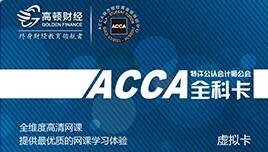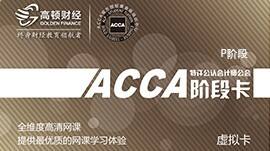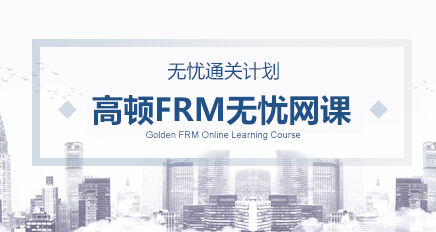2010年12月ACCA考试考官报告(P7)
General Comments
The December 2010 P7 paper covered many important syllabus areas,most of which had been tested in some capacity at previous sittings.It was therefore unsatisfactory to see very little improvement in candidates’ performance as a whole.Of course,some candidates did very well,and there were some scripts displaying first-rate analytical and application skills.But the majority of scripts unfortunately failed to demonstrate sufficient knowledge or higher professional skills to achieve a pass mark.
The examination comprised two compulsory questions in Section A,and three questions in Section B of which two should be attempted.Both Section A questions were based on detailed scenarios,and contained several requirements covering different syllabus areas.
Each optional 20 mark question in Section B included a short scenario,and several requirements.Of the section B questions,question 4 was by far the most popular,and question 5 the least popular.
The same factors as detailed in previous examiner’s reports continue to contribute to the disappointing pass rate:
•Failing to answer the specific question requirements
•Not applying knowledge to question scenarios
•Making too few comments given the mark allocation of a requirement
•Lack of knowledge on certain syllabus areas
•Illegible handwriting
The rest of this report contains a discussion of each question,highlighting the requirements that were answered well,and the areas that need improvement.
Specific Comments
Question One
This question was for 32 marks,and involved a new audit engagement,with the candidate placed in the position of the audit manager.Requirements involved a business risk evaluation,identification and explanation of relevant financial statement risks,and audit procedures relating to a brand name.
On the whole,candidates seemed to like this question,especially the business risk evaluation.However,many candidates failed to answer the specific question requirements,thereby denying themselves of marks.
Requirement (a) asked for an evaluation of business risks,for 15 marks.The audit client operated in the retail industry and had recently initiated several strategies aimed at expansion,including e-commerce.It was clear that most candidates were prepared for this type of requirement,and on the whole performed well.Answers tended to display reasonable application skills,with some candidates prioritising the risks identified,and reaching an overall conclusion.There was much less evidence here of ‘knowledge-dumping’ than in answers to other requirements.Some answers worked through the scenario,and for each risk identified explained the potential impact on the business.Some answers also made connections between different aspects of the client’s business,for example,that joining the Fair Trade Initiative would have cost repercussions at a time when profit margins were reducing.
However,answers still left a lot of room for improvement.Common weaknesses in answers to the requirement included:
•Repeating large chunks of text from the scenario with no explanation provided
•Not actually explaining or evaluating a risk identified – just saying ‘this is a risk’
•Providing detailed definitions of business risk,which was not asked for
•Providing audit procedures for risks,again not asked for
There was far too much emphasis on going concern risk,often raised indiscriminately for every risk area identified.
In addition,it is worth noting that very few candidates used the figures provided in the scenario to identify risk exposure.The client’s revenue and profit had fallen from the previous year,and some simple financial analysis could have revealed falling profit margins and worsening interest cover.This type of analysis is not difficult or time consuming,and is something that demonstrates mark-generating application skills.
Finally,some candidates simply failed to answer the question requirement.A minority of candidates took the opportunity to provide many pages of answer which just described how you would plan an audit in general,including descriptions of contacting the previous auditor,determining materiality levels,and meeting the client to discuss the engagement.All of this was totally irrelevant,and failed to generate any marks..Candidates are reminded that they must answer the specific question requirement,and not the requirement they would like to have been asked.
There were 2 professional marks available in connection with requirement (a).Most candidates attempted the briefing notes format by including an appropriate heading and introduction.It seemed that by the end of their answer however,candidates had forgotten about the professional marks,as it was rare to see a conclusion provided on the business risk evaluation.Candidates are reminded that resources are available on ACCA’s website providing guidance on the importance of professional marks.
Requirement (b) was for 10 marks,and asked candidates to identify and explain five financial statement risks from the scenario.The quality of answers to this requirement was unsatisfactory.The minority of candidates who scored well on this requirement provided a succinct explanation of the financial statement risk,clearly stating the potential impact of the risk identified on the financial statements.Some answers,which were by far the majority,tended to just outline an accounting treatment with no mention of the actual risk itself.Another common weakness was to discuss the detection risk which may arise with a new audit client,which is not a financial statement risk.Given that financial statement risks have featured in several previous examinations it was somewhat surprising that the majority of candidates could not provide a satisfactory answer,especially when requirement (a) had asked for a business risk evaluation,which should then lead into the identification of financial statement risks as part of audit methodology.
Some candidates used the financial information provided to identify financial statement risks,rarely with any success.Common statements of this type were along the lines of ‘revenue is reduced,so there is a risk of understatement’.
Finally,there was a tendency for candidates to provide more than the required number of financial statement risks,which is clearly a waste of time.
Requirement (c) asked candidates to recommend principal audit procedures in relation to the valuation of a purchased brand name,which was recognised at cost in the financial statements.Some candidates scored well here,providing well written procedures specific to the valuation of an intangible asset.Some answers recognised that procedures should focus on determining whether or not the brand was impaired and whether the non-amortisation policy was appropriate.The most common errors here included:
•Mis-reading the scenario and thinking the brand was internally generated (the scenario clearly stated that the brand had been purchased several years ago).
•Mis-reading the scenario and thinking the brand was amortised (the scenario clearly states it is not amortised).
•Providing detailed explanations of the requirements of IAS 38 Intangible Assets (not asked for).
There were a lot of standard tests provided which did not fit the scenario,like checking management calculations on amortisation,and checking the qualifications of the valuer.
Candidates are reminded that audit procedures must be tailored to the facts of the scenario provided and must be sufficiently detailed to make sense.‘Get management rep’,'discuss with management’ and ‘review cost’ are examples of meaningless ‘procedures’ which earn no credit without further development.In addition there were many instances where candidates were obviously trying to generate procedures using a list of words as a prompt.For example 'observe the asset’ or ‘inquire about the asset’.Candidates must think carefully and not just use words as a prompt if they make no sense.Candidates are encouraged to read the examiner’s article on exam technique in answering questions on audit procedures,published in September 2009 and available on ACCA’s website.
Overall,question one and requirement (a) in particular was reasonably answered by a large proportion of candidates.However,answers to requirement (b) were unsatisfactory.
Question Two
Question two was for 28 marks,and featured an assurance engagement for an existing audit client.Both the audit firm and the client were global enterprises,and the client was listed on several stock exchanges.Candidates responded reasonably well to parts of this question,though many answers did not reach their full potential by not being applied to the question scenario.
Requirement (a),for 12 marks,asked candidates to identify and explain the matters that should be considered in evaluating whether the audit firm should perform an assurance engagement on the client’s Sustainability Report.It was clear that most candidates knew the matters that should be considered (ethical constraints,resources,knowledge,timescale,fees etc),and most candidates took the right approach to the question,by working through the various ‘matters’ and applying them to the question.The fact that this was not an audit engagement did not seem to faze candidates,and there were many sound answers to this requirement.Some answers evaluated the many ethical problems with taking on the assurance engagement as well as providing the audit for ‘a major client’,and appreciated that with only four weeks to complete the work,it would probably be impossible to ensure quality work could be performed on a global scale to such a tight deadline by an inexperienced team.
Some answers also picked up on the fact that the client’s listed status would probably prevent the audit firm from conducting the assurance engagement,and certainly the situation would need to be discussed with,and approved by the audit committee.
However,some answers were much too brief for the 12 marks available,amounting to little more than a bullet point list of matters to be considered but with no application to the scenario.Without application it was not possible to pass this requirement.Other common mistakes included:
•Ignoring the fact that the client was already an existing audit client,so discussing the need to contact its auditors for information.
•Not reading the question and thinking that you had been approached to perform the audit.
•Only discussing the potential problems and not identifying the benefits of providing the service (e.g.it would provide experience for the newly established assurance team).
•Ignoring information given in the question (e.g.saying that the firm would need to ask about the use of the assurance report–when the question clearly states that it would be published in the annual report with the financial statements).
Requirement (b) asked for procedures that could be used to verify two Key Performance Indicators (KPIs)–the number of serious accidents in the workplace,and the average annual spend on training per employee.A fair proportion of answers were sound,with precise procedures recommended.
But,many recommended procedures relied too much on observation and enquiry,and ignored the fact that the client was a global company with 300,000 employees which led to some bizarre and meaningless procedures being given,such as ‘observe a serious accident’,'inspect the location of a serious accident’,'ask how much is spent on training’,and ‘look at the training room to see how many chairs are there’.None of these could verify the KPIs and are pointless.
Requirement (c) focussed on other information published with financial statements.In the scenario an inconsistency had been discovered between a figure relating to charitable donations which had been stated at $9 million in a note to the financial statements,and $10.5 million in the Chairman’s Statement and Sustainability Report.The requirement,for 8 marks,was to explain the auditor’s responsibility,and to recommend actions to be taken.
This requirement was inadequately attempted overall.Answers were usually extremely brief,and it was clear that most candidates did not know the requirements of ISA 720 The Auditor’s Responsibilities in Relation to Other Information in Documents Containing Audited Financial Statements.Most answers took a guess that the matter would need to be discussed with management,and that if unresolved there would be some kind of impact on the auditor’s report (an 'except for’ opinion was the usual recommendation).But few could say more than this about the issue.Some candidates assumed that some kind of money laundering was taking place,leading to irrelevant discussions of reporting the situation to outside authorities.Very few candidates recognised that if uncorrected,the issue should be included in an Other Matter paragraph,as required by ISA 720.This could imply a lack of knowledge,or that some candidates are studying from out of date learning materials.
Finally,there were 2 professional marks available for requirement (c).The majority of candidates attempted to achieve these marks by using an appropriate format.However a significant minority incorrectly thought that the professional marks were attached to requirement (a).
Question Three
This was a ‘traditional’ question asking candidates for the matters that they would consider,and the evidence they should expect to find when reviewing working papers in relation to three separate issues relating to the same audit client.The client was a leading leisure travel provider with 10 million customers per annum.It was pleasing to see many candidates perform well on this question,with requirement (a) producing a number of sound answers.On the whole,candidates performed better on the evidence part of the question than seen in previous sittings,which is obviously encouraging.
Requirement (a),for 8 marks,described a legal claim which had been made against the client by a group of customers.No provision had been made,and the client’s management justified this on the grounds that the amount would be covered by insurance.Almost all candidates were able to generate marks by calculating the materiality of the amount,and describing the basic accounting treatment for provisions.Fewer went on to discuss the potential impact of the insurance cover,and some answers drifted into a discussion of going concern and other business risks.
Some candidates mistakenly thought that the event happened after the year-end,and others thought that the airline 'belonged’ to the client.Surprisingly,only a minority of candidates picked up on the fact that management would not want to recognise the provision due to a bonus being based on profit before tax of the company.
Audit procedures were often inadequately focused,with no regard to the scale of the issue.Although most suggested looking at legal documents,candidates rarely mentioned looking at the group claim document.Some candidates proposed lots of very detailed tests on the validity of individual claims,such as checking hotel bills and airline tickets.
Requirement (b),for 7 marks,dealt with a business segment which had seen significant reductions in revenue and profit.This part of the question was not dealt with well.Very few candidates recognised that the business segment represented a cash generating unit that required an impairment test.Most picked up a mark by calculating materiality,but then could only discuss the fact that the internally generated brand name was correctly not recognised in the financial statements.Even those candidates that did pick up on the impairment issue could rarely provide evidence points other than ‘check the value of the assets’ (too vague) or ‘inspect the assets’ (irrelevant,and ignoring the fact that the assets in question are cruise liners in operation so very unlikely to be conveniently located near the auditor).Many candidates could only provide evidence points on the brand name,even though was not recognised in the financial statements at all,leading to pointless procedures such as ‘inspect the brand name in the register’,'observe the operation of the brand name’ and ‘check the value of the brand name’.
Requirement (c),for 5 marks,concerned a post year-end acquisition,which should have been disclosed in the notes to the financial statements.Many candidates correctly discussed the issue,and provided sensible evidence points concerning the verification of the date that control of the new subsidiary passed to the client,and the scale of its operations.
Unfortunately,many candidates wanted to see the new subsidiary consolidated,even though it had clearly been purchased after the end of the reporting period.At the other end of the spectrum,some candidates suggested that as the event happened after the year end,the auditor need not perform any procedures at all.Both of these approaches totally missed the point of the scenario,and indicate that candidates must take time to think about the information that has been presented to them before rushing to write their answer.
Question Four
This was the most popular of the optional questions,and focussed on ethics and practice management.It was very pleasing to see many candidates achieve a clear pass on both (a) and (b).
Requirement (ai) asked candidates to critically evaluate a proposed advertisement to be placed in a national newspaper,for 8 marks.This was probably the best answered requirement of the whole paper,with many achieving a clear pass,and quite a few maximum marks were awarded.The few unsatisfactory answers tended to simply repeat extracts from the advertisement and say ‘this is unprofessional’.
Requirement (aii) asked candidates to evaluate whether a corporate finance service could be offered to clients,for 5 marks.This was not well answered.While most candidates could state obvious issues,like whether one person would be enough to provide the service,unfortunately very few clearly distinguished between audit and non-audit clients,which was a key issue,as the scenario clearly stated that only one third of the audit firm’s clients were audit clients.Few dealt with the issue of the contingent fee in enough detail,with answers usually saying that it was 'unprofessional’ but not elaborating further.
Requirement (b) dealt with the ethical problems raised by long association of audit firms and their clients.For 7 marks,candidates were asked to explain the ethical threats,and to evaluate the advantages and disadvantages of compulsory firm rotation.On the whole,this was well answered.Most candidates could identify and explain to some extent the various ethical threats posed by long association,with the familiarity threat being the most common to be discussed.The advantages and disadvantages were often dealt with reasonably well,though a lot of answers were just bullet point lists with no real evaluation provided at all.For many candidates this was the last requirement attempted,so the brevity of answers was probably linked to time management in the exam.
Question Five
This was by far the least popular of the optional questions,focussing on audit reports,and reporting on internal control deficiencies.
Requirement (ai),for 10 marks,asked for a critical appraisal of a draft audit report,in which a disclaimer of opinion had been given,following a management imposed limitation in scope resulting in a lack of evidence with regard to research and development costs.Some answers were sound,and worked through the audit report,explaining its deficiencies in a logical manner.Some answers appreciated that the disclaimer of opinion may be an over-reaction,and that a qualification may be more suitable.Other points raised in some answers concerned the inappropriate wording of the audit report,the reference to management lack of integrity,and the fact that the matter had not been quantified,making it difficult for users of the report to gauge the significance of the matter.Almost all candidates correctly determined the materiality of the matter.
Unsatisfactory answers,which were by far the majority,tended not to appraise the audit report at all,and instead provided lengthy explanations of the accounting treatment for research and development,but completely missed the point that the auditor was unable to verify if the correct accounting treatment had been applied.Some blamed the audit team,rather than the client,for the lack of evidence,and suggested that the whole audit be reperformed.
Requirement (aii) continued the theme of (ai),asking for matters that should be considered and further actions that should be taken by the auditor,in light of the limitation in scope.Most candidates suggested that the limitation in scope and its potential impact on the audit report be taken to audit committee or those charged with governance for discussion,and many also raised management integrity as an issue.Some candidates tended to repeat what they had written for (ai) without further development.
Requirement (b) focussed on the new requirements of the Clarified ISAs in relation to reporting internal control deficiencies to management and those charged with governance.A brief scenario was provided,outlining internal control deficiencies discovered during the audit of trade payables,and candidates were asked the further actions they would take,and to outline any reporting requirements.This was reasonably well attempted,with most answers referring to management letter points,and making recommendations for improving controls to the client.However,there were very few references to ISA 265,and only a handful of answers discussed the importance of determining whether a deficiency is significant or not.
Overall,answers to question 5 were unsatisfactory,given that audit reports is a regularly examined syllabus area.
Conclusion
As seen in previous sittings,what makes the difference between a pass and a fail script is usually the level of application skills which have been demonstrated.Candidates who answer the specific question requirement,and tailor their answers to the scenarios provided are likely to do well.
A significant proportion of candidates continue to produce answers that are simply too vague or too brief,do not actually answer the question requirements,and display inadequate technical knowledge of the Clarified ISAs.These candidates are encouraged to improve their examination technique as well as knowledge of the syllabus by practicing as many past exam questions as possible,using up to date study materials,and by taking on board the comments made in examiner’s articles and reports.

相关阅读
2012年12月ACCA考试P4考试考官报告2013/06/19
2012年12月ACCA考试P3考试考官报告2013/06/19
2012年12月ACCA考试P2考试考官报告2013/06/19

















